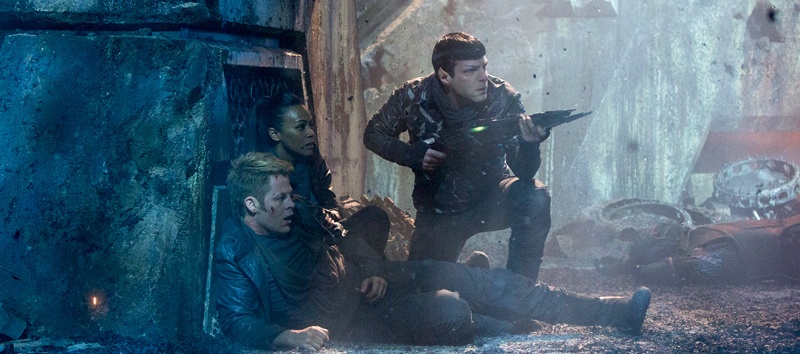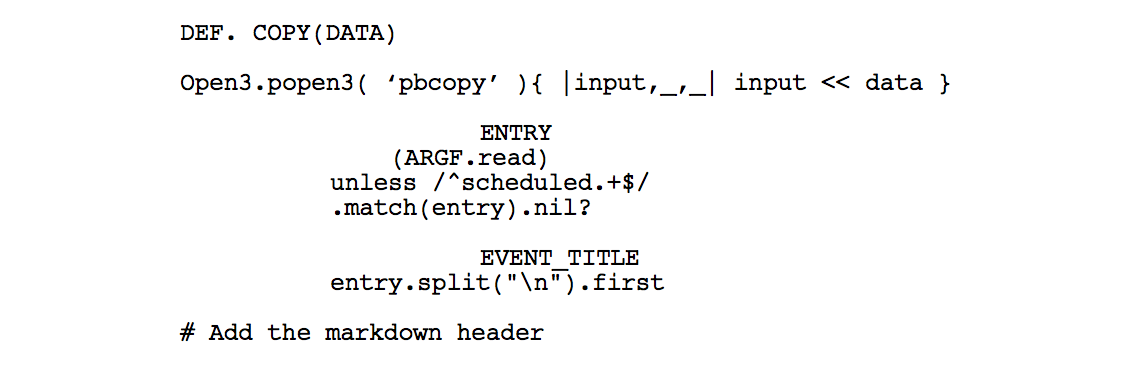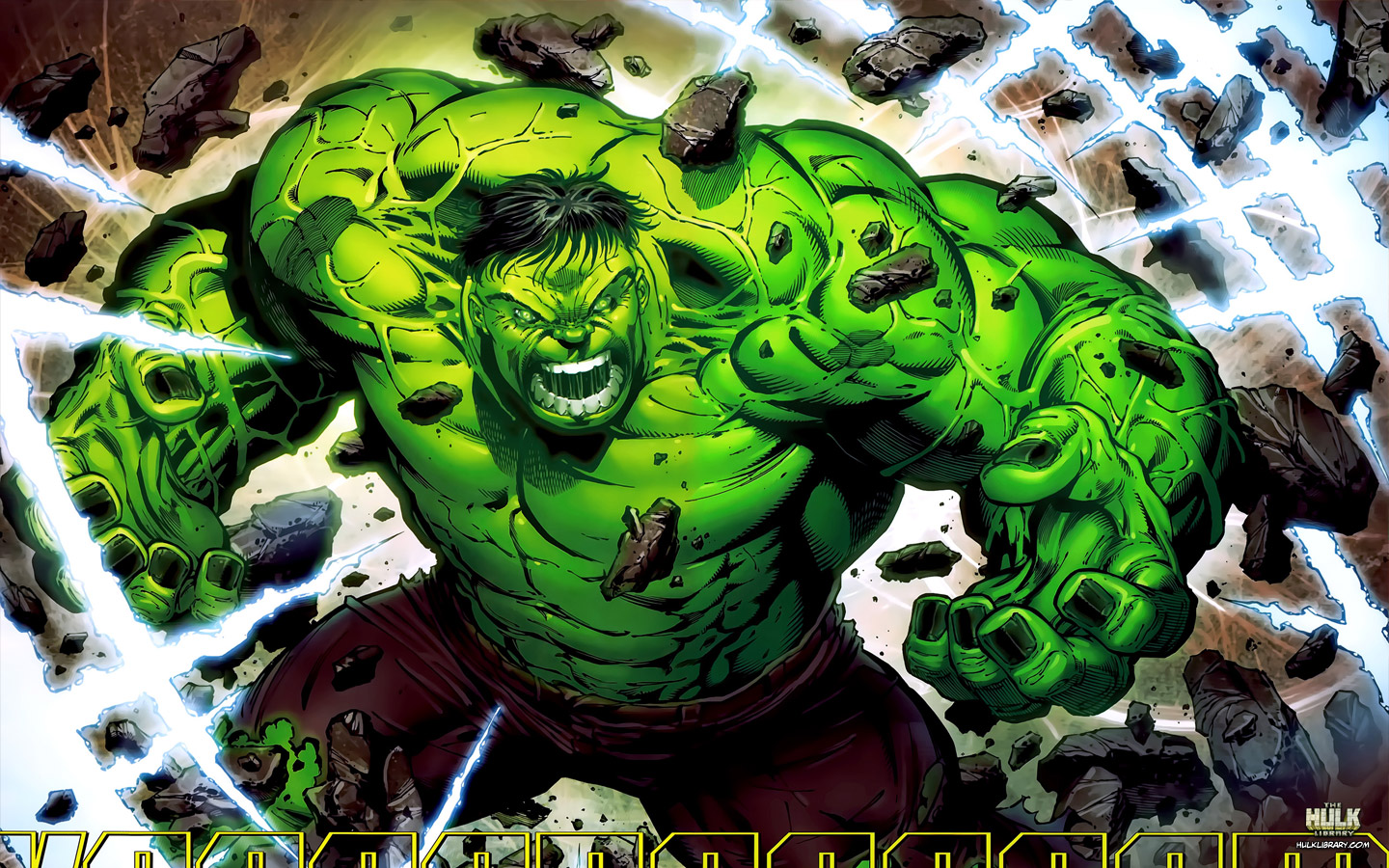
NOTE: This review contains spoilers and nerdery.
Star Trek (2?) Into Darkness is a good, fun movie. The pacing is excellent, the characters are charming, and the design and look of the world is deep and engrossing. This is not faint praise. It’s very difficult to do all these things well and the filmmakers deserve to be commended for it.
But…
Into Darkness is not a great movie.
Most negative reviews have focused on the film’s dumbness: Its plot holes, its frenetic action, its weak grasp of what makes Trek Trek.
These don’t bother me. Much.
The real problem is deeper. Star Trek Into Darkness borrows haphazardly from Star Trek II: The Wrath of Khan without understanding how or why that film works. As a result, Into Darkness lacks a coherent theme.
“Aren’t You Dead?”

Wrath of Khan is beloved because it has a powerful thematic story that is appropriate to its characters and its context.
William Shatner was 51 when the movie was released. The original series had been off the air for 13 years. Faced with an aging cast and a franchise better known because of nostalgia than quality, the writers leaned into the problem and created a film centered on death, aging, and rebirth.
Every element in Wrath of Khan is almost ludicrously on theme:
- The film opens with a simulation in which the entire Enterprise crew is killed.
- The dialogue constantly remarks on the crew’s age and Kirk’s mortality (his fading eyesight, his love of antiques, his birthday, etc).
- Kirk dismisses space travel as an adventure for the young.
- The film’s science fiction gimmick, the Genesis Device, is literally a machine that creates life from death.
- The film’s villain is an old foe from Kirk’s youth who blames Kirk for the death of his wife.
- Kirk reconnects with an old flame and a son he never knew he had.
- Kirk faces death for the first time as Spock sacrifices himself to save the Enterprise.
- And in the final exchange on the bridge, Kirk reveals that his journey and his loss have made him feel young again.
Wrath of Khan knows the story it’s trying to tell and it selects every element to further that story.
“Khaaaaaaaaaan!”

Compare this to Into Darkness, which remixes the elements and climactic scenes from Wrath of Khan using a cast of 30-somethings going on their first missions.
Chris Pine’s Captain Kirk is introduced as young, inexperienced, and brash. He’s a risk taker who has never had to face the consequences of his actions. Someday, we’re warned, his brashness could get his entire crew killed.
So what does the story do? It sends him on a revenge mission in which he succeeds by… taking wild and dangerous risks and going with his gut. Then in a funhouse mirror version of Wrath of Khan’s climax, Kirk sacrifices himself to save the Enterprise (a dubious piece of character growth considering Kirk would’ve certainly sacrificed himself at any other point in the film to save his crew). The film’s final message is that we should not let attacks on our homeland cause us to become worse than the enemies we face. Also, Spock learns to get angry, shouts “Khaaaaaaaaan” for some reason, and then beats a guy up. And oh yeah, Kirk is revived by magic space blood.
This is thematic spaghetti. It is a messy collection of ideas that do not resonate or hold together. Into Darkness attempts to use images and scenes from Wrath of Khan with characters, contexts, and themes to which they do not apply.
Spock’s death in Wrath of Khan is significant because the movie is built on themes of mortality and aging. And because we the audience have a long and deep understanding of the character and his relationship with Kirk and Bones. It is the ultimate test for Kirk in the movie, confirming the film’s theme that “how we deal with death is at least as important as how we deal with life.”
Fast forward 31 years: Kirk’s death in Into Darkness is a third act twist designed to inspire an action sequence in which Spock fist fights Khan on top of a flying garbage truck. A good remix should redefine or add to the original, creating a contrast (or unexpected similarity) that generates new meanings. Star Trek Into Darkness remixes Wrath of Khan’s ending because it’s a cool idea, not because it has any thematic connection to its characters or its story.
This new Kirk and new Spock do not need to face their mortality. Each has seen loved ones die (in this same movie in fact). This Kirk and Spock are different, younger characters who need to learn different lessons. Putting these characters in the climax from Wrath of Khan is an empty exercise.
The Future
Star Trek Into Darkness is solid popcorn fare. I’d be very happy if future Star Trek movies maintained this level of fun, humor, and action.
But I also hope that future sequels will aim higher. There’s a moment in Into Darkness when Uhura angrily accuses Spock of feeling nothing when faced with death. Spock explains that he chooses not to feel because his emotions are so painful and potent, not because he doesn’t have them. Death reminds him of the overpowering grief he felt watching his planet and his mother die in the previous film. This is a new (but completely valid) take on the character that uses the same science fiction premise (a species that suppresses their emotions) to tell a meaningfully different story about the human experience.
That’s Star Trek. And I’d like a sequel to move forward with that sort of confidence. To tell a story that fits and serves the new characters, rather than endlessly remixing and rebooting the past.
 Photo Credit: wonder_al
Photo Credit: wonder_al
There are a lot of sites out there offering tips for selling on Craigslist. Putting pictures in your ad, setting a reasonable price, deciding on a public place, etc. That’s all fine.
But they don’t mention the most important Craigslist tip: How to Avoid Morons.
And it’s actually pretty damn simple.
Pick Up a Phone, Call Someone
Craigslist requires human interaction, and trying to avoid that interaction with emails or txt messages is self-defeating.
Think about it. Craigslist uses an anonymized email system that reduces each email address to a string of randomized characters. Would you try to negotiate a sale and meeting via the anonymous comments section on YouTube? Of course not. Because SpunkyChowChik89 is not a person and cannot be trusted.
To successfully set up an exchange with minimum bullshit you have to break down the anonymity by picking up the phone and talking to a human being.
In thirty seconds on the phone you’ll instantly get a gut feeling about whether you’re dealing with a moron or a serious buyer. Just as importantly, you will become a person in the buyer’s mind rather than an anonymous douche.
Almost every Craigslist meeting I’ve set via txt message has resulted in the buyer flaking out. Almost every call has resulted in a quick and easy sale. It’s much harder to ignore a commitment made with your own voice.
Craigslist is about trading time/convenience for cash. It’s not always worth it, but don’t make it harder on yourself by pretending you’re dealing with Amazon or an ATM machine. You’re not. You’re dealing with a weird guy named Chaz who wants to buy your used Blackberry Playbook. Give Chaz a call.

There are two types of writing that consume most of my time. One is a passion and something I hope will be my career, screenwriting. The other is a hobby, coding.
But even though creative writing is so much more important to me, I start and complete far more coding projects. Why?
Coding Never Starts from Scratch
Coding is less intimidating than screenwriting because my tools are more expansive and my goals more limited. When I get an itch to code something (for instance a script to convert iCal calendar entries into Markdown), the goal is small, obvious, and concrete. But more importantly, I never have to start from a blank page.
Depending on what tool I’m using, there are thousands of projects, gems, or code snippets to pull from. I can “hack” a script to do what I want while outsourcing all of the heavy lifting. All I have to do is stitch together pieces created by far smarter, far more skilled programmers.
Creative Writing Means Reinventing the Wheel
But screenwriting means facing the blank page. You have language, formatting, and conventions to build from and little else. It’s more akin to programming in something like machine code.
There’s no Bootstrap story you can load and tweak into a final product. Sure, you can build off the structure or character or ideas of others. But a good screenplay is driven by theme. Those basic story elements shouldn’t be interchangeable. They should be carefully chosen to develop and further the core idea.
Aiming Smaller
I can’t add functions or loops or libraries to screenwriting, but I can aim for smaller more concrete goals. I’m writing more tweets, more blog posts, and also reading up on short fiction. My hope is that by writing more small creative projects, I can feed off the same sense of satisfaction I get from solving small, everyday annoyances with code. Maybe if I do it for long enough, I’ll even forget to be scared of the blank page.

Film Crit Hulk offers some of the most detailed, insightful film criticism on the web. But there’s a catch…
Hulk Shouts
HULK HAS TALKED ON AND ON ABOUT HOW MUCH SOUND IS “THE ACTUAL VISCERAL EXPERIENCE OF MOVIES,” AND THAT IS VERY MUCH TRUE, BUT THAT STATEMENT IS NOT TO DOWNPLAY THE STUNNING IMPORTANCE OF CINEMATOGRAPHY THAT CONVEYS BOTH INFORMATION AND FEELING TOO.
Blech. I understand that he’s a half-ton, gamma-irradiated super being, but that’s really unpleasant.
So during a particularly fierce procrastination session I developed a cure for Hulk:
Hulk has talked on and on about how much sound is “the actual visceral experience of movies,” and that is very much true, but that statement is not to downplay the stunning importance of cinematography that conveys both information and feeling too.
Much better, right?
Installing the Cure
The cure is a bookmarklet that uses Javascript and regular expressions to de-gamma-irradiate Film Crit Hulk and turn him into Film Crit Bruce Banner. He still has a few grammar issues, likely due to brain damage, but I personally find him a lot more pleasant.
You can install the cure by dragging the link below to your bookmarks bar. It looks like this in Chrome.
Then just visit a Film Crit Hulk article (here’s a good one) and click the bookmarklet.
Update
05/02/2015 - Film Crit Hulk has moved to a new website. I’ve updated the bookmarklet to work on the new site. I’ve also gotten rid of the old, more complicated bookmarklet that tried to fix Hulk’s goofy grammar.
This post is getting a lot of attention recently thanks to links from John Siracusa and Chris Kluwe. If you like my bookmarklet, you can follow me on Twitter @simonganz. Thanks!

The Problem
- Grandma moved from New York to Los Angeles
- Grandma wants to listen to every Mets game
- Grandma is legally blind and has never used a computer
First Solution: Internet Radio
Steps for Me
- Buy Grandma a Squeezebox Internet Radio Player
- Set the first preset to WFAN, the Mets radio station
- Teach grandma to use the preset
Steps for Grandma
- Press the preset
Outcome
Fuck, they blackout all the games.
Second Solution: Drive an iPad Over
Steps for My Mom
- Subscribe to MLB Gameday Audio on the iPad
- Remember there’s a Mets game
- Drive the iPad over to Grandma’s place
- Turn on the game and leave
- Come back four hours later to retrieve the iPad
Steps for Grandma
- Call my mom to remind her there’s a game
- Call my mom when the game is over so mom can turn the iPad off
Outcome
Mom says, “162 games in a season!?”
Third Solution: Remote VNC
Steps for Me
- Purchase Mac Mini
- Purchase speakers
- Install Mac Mini and Speakers under Grandma’s TV
- Install VNC software on Mac Mini
- Remotely launch MLB Gameday Audio in Safari, find WFAN link, enter login credentials everytime Grandma calls
Steps for Grandma
- Call me to turn the game on
- Get spooked out when sound suddenly starts coming out of her TV
- Call me to turn the game off
Outcome
Simon says, “162 fucking games in a season!?”
The (!?) Solution
Steps for Me
- Write Safari Extension to automatically load WFAN whenever Safari is launched
- Write Safari Extension to automatically log into MLB Gameday Audio when necessary
- Buy GriffinPowermate
- Setup PowerMate so that one button press launches Safari and raises the volume, and one long button press quits Safari and mutes the volume
- Teach Grandma to use the button
Steps for Grandma
- Push the button to turn on the game
- Hold the button to turn off the game
Outcome
I’ll let you know!
Update:
The button worked well for a year until a much better solution presented itself. SiriusXM now offers a special internet radio channel that automatically tunes to Mets games. That means Grandma can use the internet radio preset to listen to games.
I’ve since repurposed the PowerMate button so control iTunes and play/pause audio books for Grandma.






